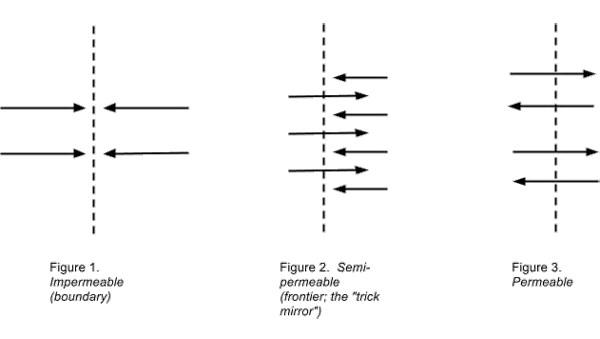of self becomes more complex. One's concept of home is constantly being refined and tested by each new encounter. Most travelers have experienced this sensation. The third stage occurs when one returns home and begins the process of synthesizing these two thinking models — that of the stage one observer with the stage two traveler. There is a sort of give and take, where new information and experience have thrown into relief existing characteristics of self that may not have been previously apparent.
The following diagrams are crude representations of three different types of borders and the economies of ideas and information that occur around them.

Figs. 1-3 correspond roughly to the kind of activity that happens in the three stages described in the previous paragraph. In Fig. 1 the border has not been breached; there may exist a sort of civil regard between the entities but there is no appreciable flow across the boundary from either direction. Fig. 2 depicts the pioneering of one entity into another. This is the second, exploratory phase, a "trick mirror" of sorts where the border is being penetrated from one but not both sides. Fig. 3 shows an open border and a system of exchange between entities on either side.
Not to be confused with the above which diagrammed some very basic types of activity that can happen at borders, below are three examples of postures or attitudes that may be adopted when interacting with a border:

 © 2013 Works & Days Quarterly and Luke Cissell
© 2013 Works & Days Quarterly and Luke Cissell